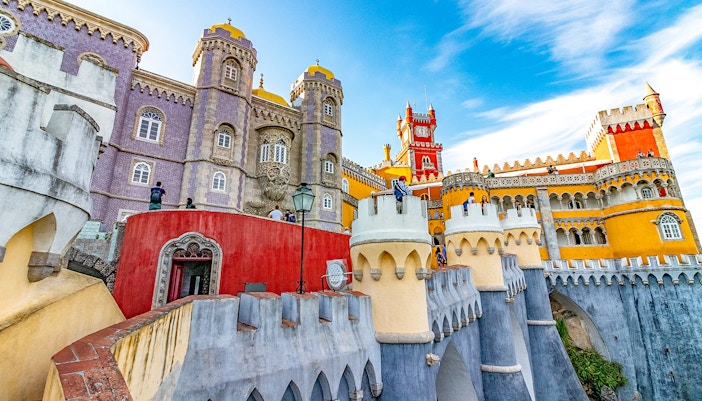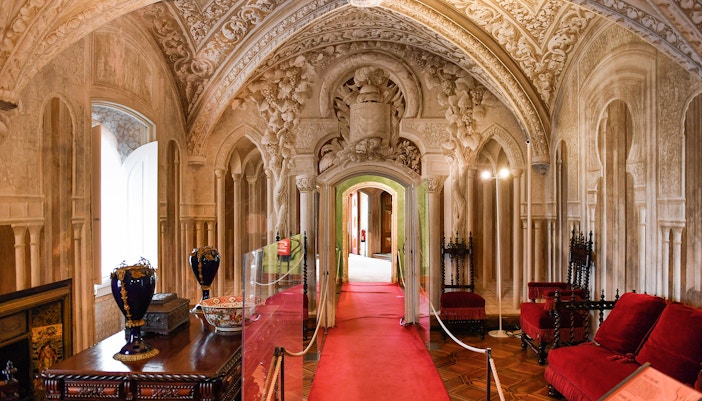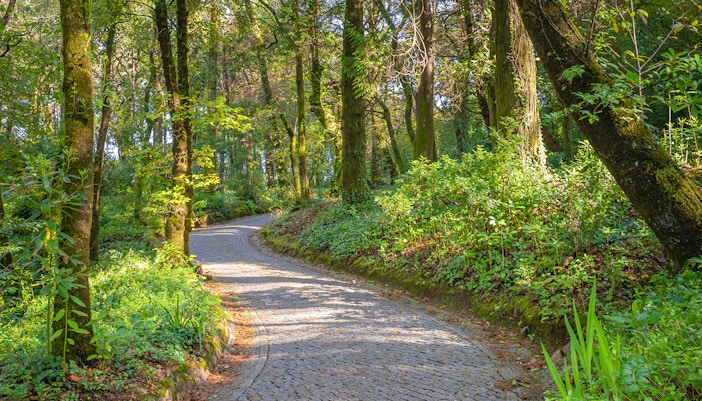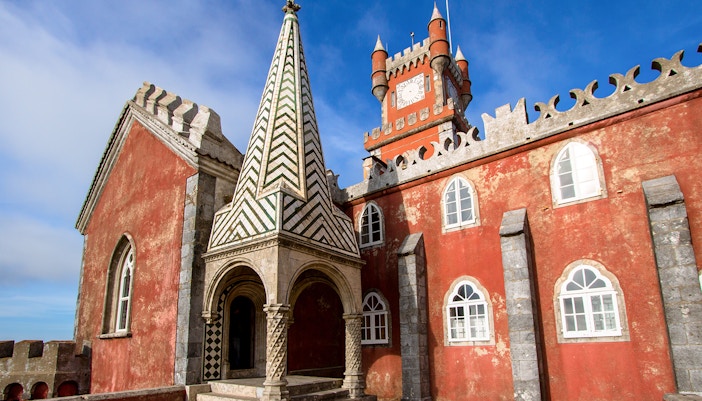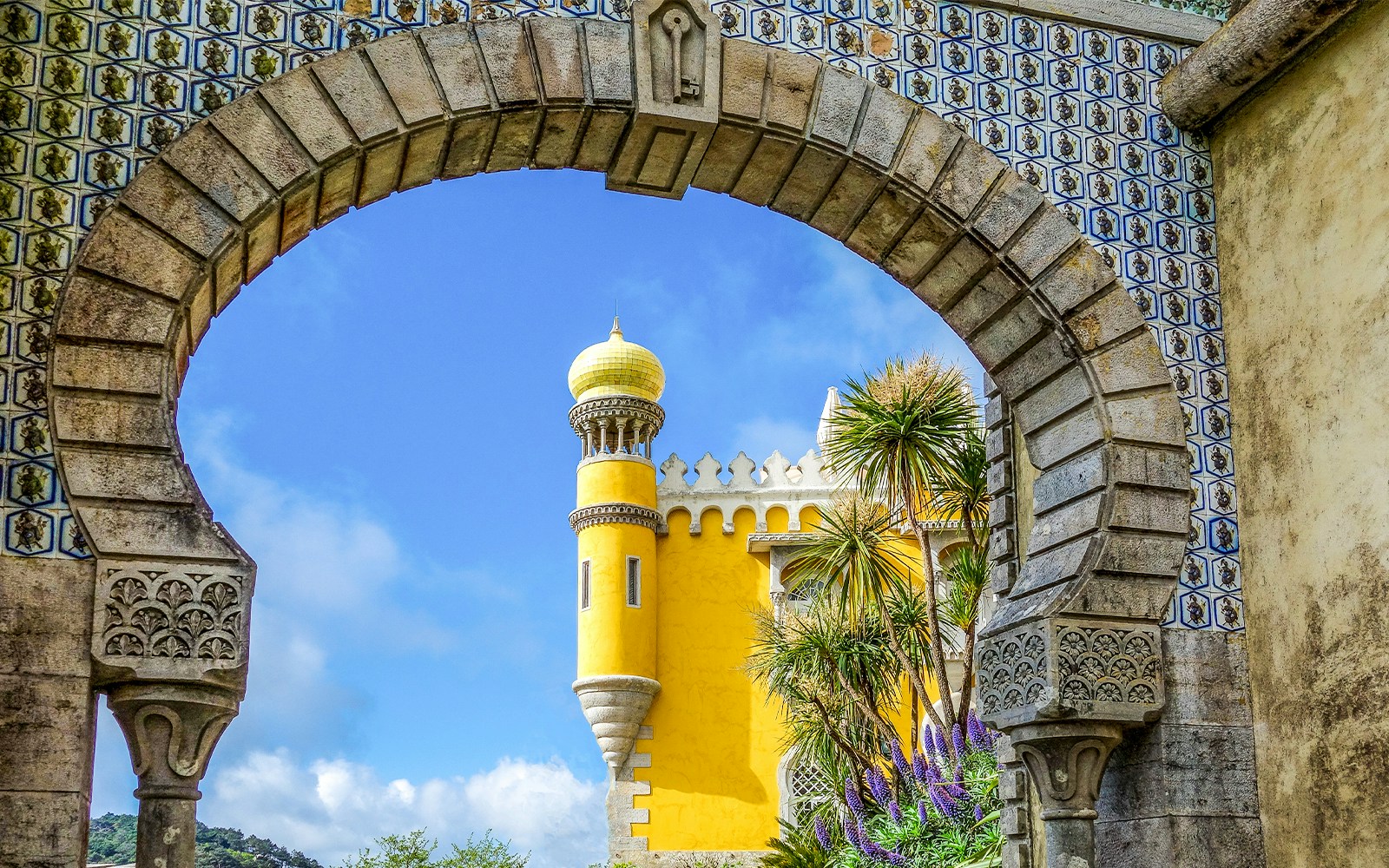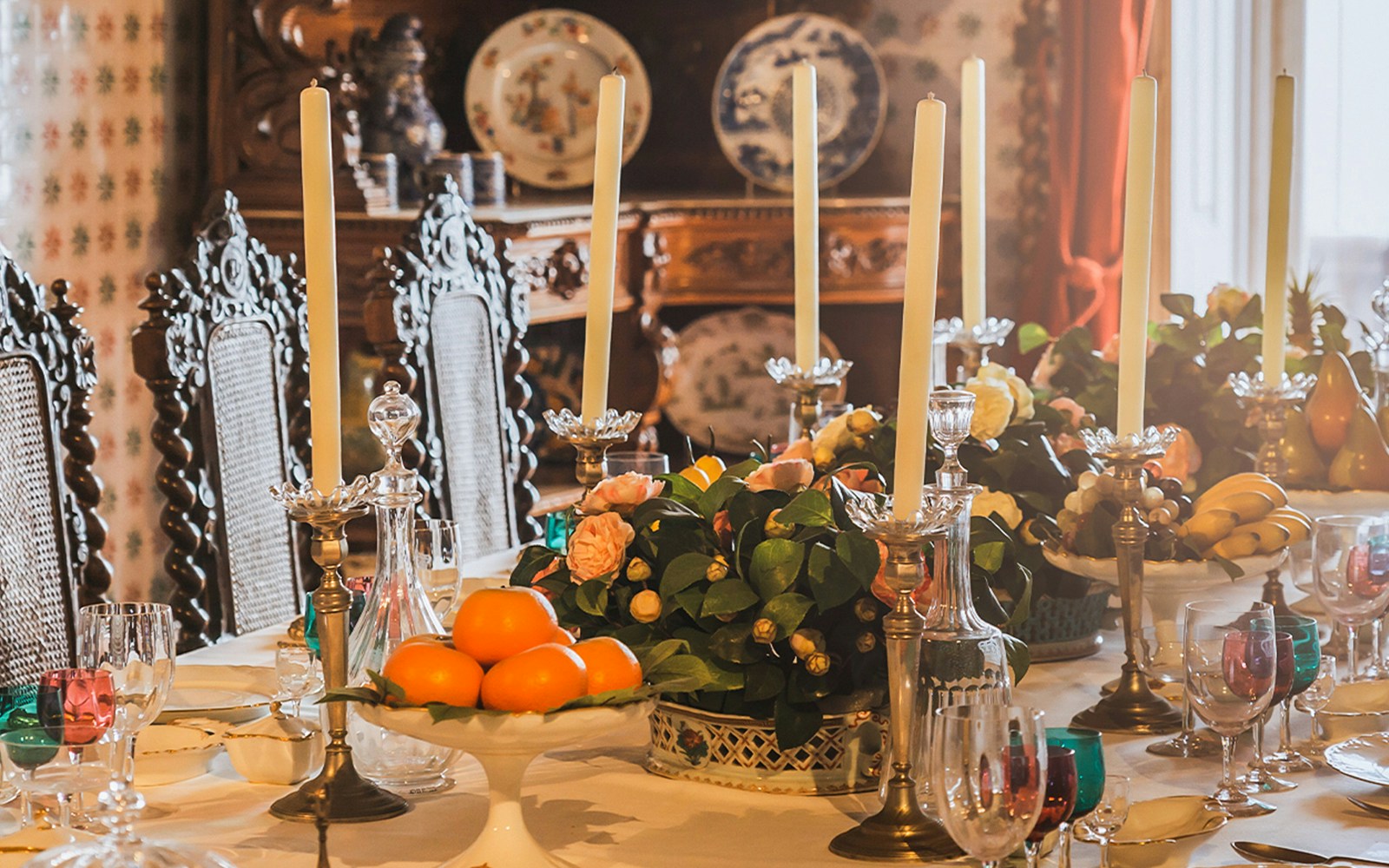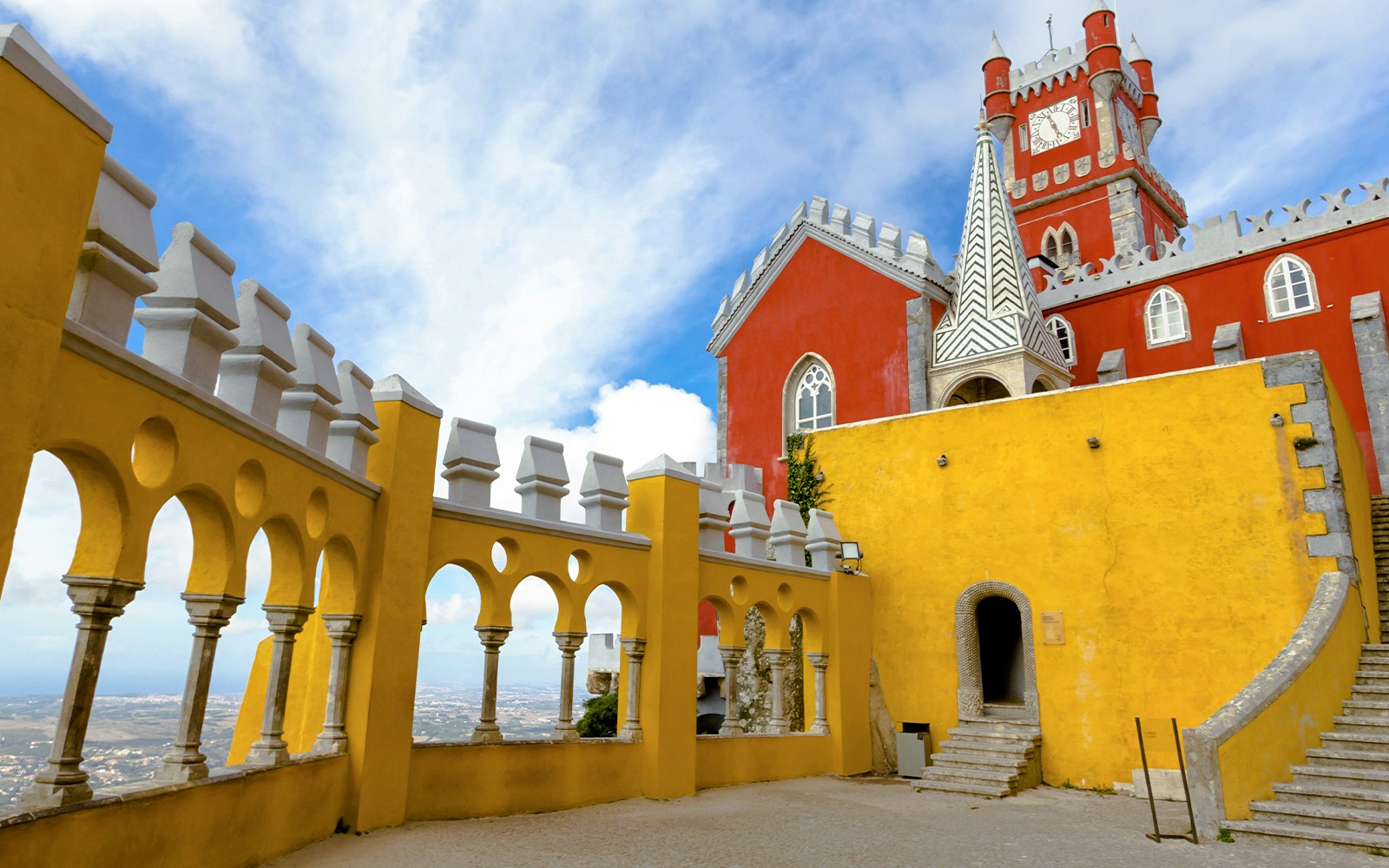- In 1995, the Pena Palace Sintra was classified as a World Heritage Site by UNESCO.
- The Pena Palace is listed among one of the Seven Wonders of Portugal.
- Witness a unique blend of architectural styles from the Neo-Gothic to Neo-Manueline and even the Neo-Moorish which became prominent in the 1840s.
- Pena Palace is known for its colourful terraces and decorative battlements that cannot be missed.
- The interiors of Pena Palace are richly decorated with tiles presenting amazing stucco sand Trompe-loeil painted walls.


